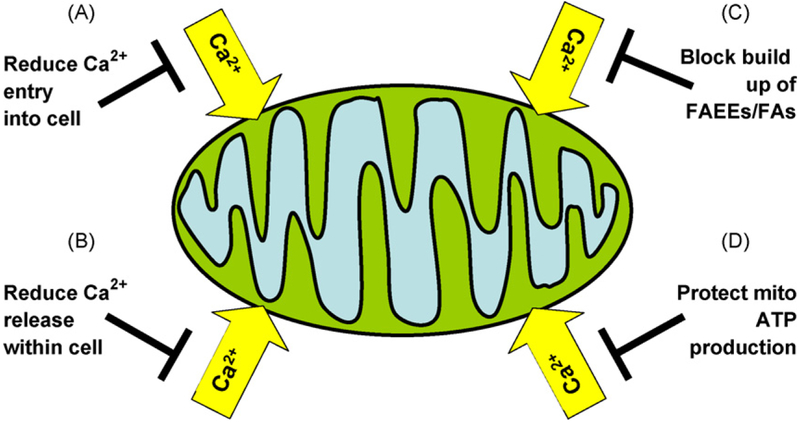Figure 7.
Strategies to reduce mitochondrial injury and acinar cell damage in pancreatitis. (A) Blockage of Ca2+ entry will probably depend on identification of the SOC channel in the pancreatic acinar cell. (B) Prevention of intracellular Ca2+ release that awaits identification of specific antagonists of pancreatic acinar cell Ca2+ release mechanisms (see also Fig. 2). (C) Inhibition of fatty acid ethyl ester (FAEE) synthases combine ethanol with FAs, after which FAEEs bind to and accumulate within the inner mitochondrial membrane. Inhibition of hydrolases would prevent the release of FAs from FAEEs already accumulated within mitochondria. (D) Anti-oxidant and/or preconditioning strategies could preserve mitochondrial function to deliver adequate ATP for pancreatic acinar cells to survive intact.

